预约演示
更新于:2025-12-04

Beijing Normal University
更新于:2025-12-04
概览
标签
肿瘤
神经系统疾病
泌尿生殖系统疾病
诊断用放射药物
小分子化药
放射与诊断药物
疾病领域得分
一眼洞穿机构专注的疾病领域
暂无数据
技术平台
公司药物应用最多的技术
暂无数据
靶点
公司最常开发的靶点
暂无数据
| 排名前五的药物类型 | 数量 |
|---|---|
| 诊断用放射药物 | 30 |
| 小分子化药 | 23 |
| 放射与诊断药物 | 12 |
| 核素偶联药物 | 6 |
| 多肽偶联核素 | 4 |
关联
57
项与 北京师范大学 相关的药物靶点- |
作用机制- |
在研机构 |
原研机构 |
在研适应症 |
非在研适应症- |
最高研发阶段申请上市 |
首次获批国家/地区- |
首次获批日期- |
靶点 |
作用机制 CaM调节剂 |
在研机构 |
原研机构 |
非在研适应症- |
最高研发阶段临床1/2期 |
首次获批国家/地区- |
首次获批日期- |
靶点- |
作用机制 SPECT |
在研机构 |
原研机构 |
在研适应症 |
非在研适应症- |
最高研发阶段临床1期 |
首次获批国家/地区- |
首次获批日期- |
82
项与 北京师范大学 相关的临床试验ITMCTR2025001605
Effects of Tai Chi on Aging in Middle-aged and Elderly People: A Cross-sectional Study
开始日期2025-09-30 |
申办/合作机构 |
NCT06992180
The Intervention Effect of Generative Artificial Intelligence (Emohaa) and Individual Psychological Counseling on Emotional Distress in Young Adults: A Randomized Controlled Trial
This randomized controlled trial aims to evaluate the effectiveness of an AI-based mental health chatbot, Emohaa, in reducing symptoms of depression, anxiety, insomnia, and academic burnout among young adults experiencing emotional distress. A total of 222 participants will be randomly assigned to one of three groups: (1) AI chatbot intervention, (2) traditional counseling, or (3) waitlist control. The study spans six time points from baseline through one-month follow-up. Primary and secondary outcomes will be measured via validated self-report questionnaires. The intervention is delivered entirely online through a WeChat-integrated platform, ensuring high accessibility and scalability.
开始日期2025-05-20 |
申办/合作机构  中国农业大学 中国农业大学 [+2] |
ChiCTR2500104856
The effectiveness of self-help smartphone-based intervention on the depression in the university students
开始日期2025-04-04 |
申办/合作机构  北京师范大学 北京师范大学 [+1] |
100 项与 北京师范大学 相关的临床结果
登录后查看更多信息
0 项与 北京师范大学 相关的专利(医药)
登录后查看更多信息
24,648
项与 北京师范大学 相关的文献(医药)2026-02-01·JOURNAL OF AFFECTIVE DISORDERS
Depression screening with textual and audio features based on large language models and machine learning
Article
作者: Wang, Yuanyuan ; Jin, Yu ; Li, Yi ; Niu, Wenbang ; Bu, Yanjun ; Wang, Mingge ; Liu, Ao ; Chen, Xin ; Hong, Xintian
BACKGROUND:
Depression is a complex disorder that cannot be fully screened by textual features alone, as audio features capture additional psychomotor and affective changes. This study integrates textual and audio features for depression screening and compares the performance of various machine learning models.
METHODS:
This study used a large-scale, multimodal psychology dataset of 1275 participants (707 males, 568 females; aged 12-16 years) that integrates PHQ-9 scores, textual interview responses, and mel-spectrograms derived from audio recordings. Textual features were calculated using suicide risk scores from the Chinese Suicide Dictionary (CSD), emotional polarity probabilities, and depression severity probabilities generated by large language models (LLMs). For audio data, we estimated the combination of emotion status by the frequency (ratio) of eight emotions, which applied a fine-tuned U-Net model with mel spectrograms, mel-frequency cepstral coefficients (MFCCs), and chroma features. Finally, these features were combined and evaluated with five machine learning models using eight metrics to identify the best-performing model.
RESULTS:
Among the five machine learning methods, multimodal fusion outperformed unimodal approaches (text-only and audio-only) with the lowest MAE and RMSE. The RFR model showed the best performance for depression prediction (Accuracy = 0.98 and Precision = 0.98) with the combination of prompt3 from LLMs. The most important features for depression prediction were depression severity, negative and positive emotional polarity, and suicide risk from textual features, and emotional features (happy, angry, neutral, and surprise) from audio features.
CONCLUSIONS:
Combining audio and textual features improved depression screening accuracy. Future research could include facial expressions and physiological indicators to further enhance screening performance.
2026-02-01·JOURNAL OF COLLOID AND INTERFACE SCIENCE
Construction of a Mn-Ti3C2 three-dimensional multifunctional self-supporting cathode for lithium-oxygen batteries
Article
作者: Sun, Genban ; Han, Kunyu ; Deng, Shijie ; Li, Huifeng ; Wang, Tongyue
Designing cathode catalysts with high catalytic activity has always been a key factor in improving the performance of lithium‑oxygen batteries. However, traditional cathode preparation methods have many problems, such as uneven slurry mixing. In this study, an independently self-supporting Mn-Ti3C2 electrode was prepared by using the metal ion-induced bridging method and the ice-template method as an independent cathode for lithium‑oxygen batteries. Mn bridges between Ti3C2 layers, expanding the interlayer spacing, inhibiting the tight stacking of Ti3C2 flakes, and accelerating the diffusion of O2 and Li+. The Mn-O-Ti oxygen bridge has a strong adsorption energy for reaction intermediates, which can accelerate the ORR reaction process, and the formed flake-like discharge products are conducive to decomposition. The macroporous structure formed by the ice-template method provides a large amount of accommodation space for discharge products. The lithium‑oxygen battery based on this cathode has an ultra-low overpotential (0.40 V) and an excellent cycle life, and can stably cycle 340 times at a current density of 0.1 mA/cm2. This cathode preparation method breaks through the limitations of the traditional cathode slurry coating method and expands the ideas for the preparation of new independently self-supporting cathodes for lithium‑oxygen batteries.
2026-02-01·JOURNAL OF COLLOID AND INTERFACE SCIENCE
Self-supported Fe,Mn-CoCH/NF electrocatalyst for oxygen evolution reaction
Article
作者: Sun, Huiyu ; Song, Zhongjie ; Qiang, Jiawei ; Gu, Xinyu ; Yu, Jun ; Du, Yukou ; Wu, Zhengying ; Zhang, Nannan
The oxygen evolution reaction (OER), as the core half-reaction in water electrolysis (WE), plays a decisive role in determining the overall efficiency of hydrogen production. Cobalt carbonate hydroxide (CoCH) has recently emerged as a attractive material for alkaline OER due to its robust structural stability. In this study, urchin-like CoCH was employed as a precursor template to synthesize Fe and Mn co-modified CoCH catalyst on nickel foam (NF) through Mn-doping and surface Fe-modification strategies (recorded as Fe,Mn-CoCH/NF). This optimized hierarchical structure enhanced the exposure of active sites and facilitated faster electron/mass transport paths. The incorporation of Fe and Mn effectively regulated the position of d-band center and facilitated a more efficient lattice oxygen mechanism (LOM) for OER, thereby enhancing the intrinsic activity of the catalyst. Compared to the unmodified CoCH/NF, the Fe,Mn-CoCH/NF exhibited significantly improved OER catalytic activity, characterized by a substantially reduced overpotential (204 mV at 10 mA cm-2) in alkaline electrolyte, alongside remarkable stability. Utilizing this catalyst, an overall water splitting (OWS) system was further developed, capable of driving efficient OWS at a low cell voltage (1.49 V at 10 mA cm-2). Furthermore, the unique hierarchical structure of Fe,Mn-CoCH/NF contributed to mitigating electrochemical corrosion and the toxic effects of Cl- during seawater electrolysis, enabling the catalyst to maintain excellent catalytic activity and stability even in alkaline seawater system.
114
项与 北京师范大学 相关的新闻(医药)2025-12-03
摘要
在生命科学与大数据交汇的时代前沿,有两个专业名称如双生子般让考生与家长感到迷惑:生物统计学与生物信息学。它们都致力于用数据揭示生命奥秘,但内核与路径却大不相同。
简单来说,生物统计学是“生命数据的裁判官”,专注于运用统计理论设计实验、分析数据、得出可靠结论。而生物信息学则是“生命密码的破译者”,更偏向于开发和使用计算机算法与工具,来处理海量的基因、蛋白等分子序列数据。
为了让您快速把握核心,我们先通过一个表格看清它们的主要区别:
生物统计学 (Biostatistics)
· 学科内核:统计学的分支,侧重于理论与方法。
· 核心任务:设计试验、数据分析、统计推断与决策。
· 主要工具:R, SAS, SPSS 等统计软件与编程。
· 数据焦点:各类生物医学数据(临床、流行病学、公共健康等)。
· 输出成果:统计分析报告、临床试验方案、疾病风险模型。
生物信息学 (Bioinformatics)
· 学科内核:计算机与生物的交叉,侧重于工具与算法。
· 核心任务:序列比对、基因预测、结构分析、数据库构建。
· 主要工具:Python, Perl, Linux 及各类专业生物软件。
· 数据焦点:高通量组学数据(基因组、蛋白质组等)。
· 输出成果:新基因发现、蛋白质结构模型、进化树、分析流程。
---
课程体系:数理思维 vs. 计算思维
大学课堂是区分两者的第一站,课程设置鲜明地体现了不同的思维范式。
生物统计学的课程建立在坚实的数理基础之上。你会深入学习数理统计、概率论、随机过程等理论核心,并掌握应用回归分析、多元统计、生存分析等高级方法。课程旨在培养你严谨的统计逻辑,让你能评估临床试验中的药效,或从公共卫生数据中洞察疾病流行规律。编程(如R语言)在这里是实现统计模型的工具。
生物信息学的课程则发端于分子生物学与计算机科学。你需要精通遗传学、生物化学,同时熟练掌生物信息学算法、数据库挖掘、序列比对、蛋白质结构预测等计算技能。学习重点是如何编写或使用程序,从浩如烟海的ATCG序列中提取有意义的信息。Python等语言在这里是解决生物学问题的核心技术手段。
升学深造:方法纵深 vs. 前沿交叉
无论是国内考研还是海外求学,两者的深造路径也各有侧重。
生物统计学的升学方向非常清晰,主要面向公共卫生学院、医学院或统计系下的生物统计、流行病与卫生统计等专业。深造内容是对统计方法在医学健康领域应用的纵深挖掘,例如高级临床试验设计、因果推断等。国内如南方医科大学、南京医科大学等均拥有该专业完整的本、硕、博培养体系。
生物信息学的升学路径则更显交叉与前沿。除了生物信息学本身,还可转向计算生物学、基因组学、系统生物学等领域。它广泛渗透于生命科学的各个前沿,从基础研究的分子设计到精准医学的应用。香港中文大学(深圳)等高校已开设专门的生物信息学硕士项目。
就业前景:决策支持 vs. 技术研发
走出校园,两个专业在职场中扮演着截然不同的角色,但前景同样广阔。
生物统计学是制药与公共卫生领域的“硬通货”。毕业生最主要的去向包括:
· 制药企业:担任生物统计师,负责核心的临床试验设计与数据分析,是药物能否获批上市的关键角色。
· 科研机构与医院:参与临床研究项目,从事科研数据的统计咨询与建模工作。
· 政府卫生部门/疾控中心:进行流行病学研究、健康政策制定与公共卫生监测的数据分析。
随着我国创新药研发的蓬勃发展,熟练掌握统计软件和法规的专业人才缺口巨大,职业发展稳健且需求持续增长。
生物信息学是科研与生物科技产业的“引擎”。其就业面同样多元:
· 高校与研究所:从事前沿的基因组、癌症组学等基础科研工作。
· 生物科技/医药公司:在研发部门担任生物信息分析师,负责高通量测序数据的挖掘,助力靶点发现和精准医疗。
· 医学检验机构/基因检测公司:开发和维护遗传数据分析流程与解读系统。
· 跨界领域:进入农业育种、微生物工程等需要大数据分析的行列。
实际案例中,生物信息学专业的毕业生出路多样,既有保研至北京协和医学院等顶尖学府深造,也有毕业生进入外企成功就业。
院校风向:医卫特色 vs. 生命科学融合
国内开设这两个专业的高校背景,也清晰地反映了其应用导向。
生物统计学多在实力雄厚的医科大学或药科大学开设。这些院校凭借强大的医学和公共卫生背景,培养高度契合行业需求的人才。代表性院校有:
· 中国药科大学:首批开设本科专业,聚焦创新药临床试验与医药大数据。
· 南方医科大学:国家级一流本科专业,实行小班导师制培养。
· 南京医科大学:依托省级重点学科,培养与临床研究紧密结合的专业人才。
此外,北京大学、北京师范大学等综合性大学也已增设该专业。
生物信息学则在综合性大学、理工大学或农业大学的生命科学、生物工程等相关学院下更为常见。这些院校注重生物学与信息技术的交叉培养。除前文提到的香港中文大学(深圳),国内如河南大学的生命科学学院也开设了生物信息学本科专业。
面对这两个充满希望的未来赛道,该如何选择?
你的思维更偏向生物统计学,如果你:
· 热爱数学与逻辑推理,对数字敏感。
· 追求严谨,善于从复杂数据中提炼确凿结论。
· 希望工作在医药研发或公共卫生决策的核心环节。
· 乐于使用统计工具,但不必深入计算机底层。
你的思维更偏向生物信息学,如果你:
· 对生命本身的密码(基因、蛋白)充满好奇。
· 喜欢编程,享受构建算法和流程来解决具体问题。
· 愿意探索最前沿的生命科技,工作在科研或技术开发一线。
· 具备较强的跨学科学习和动手能力。
无论选择哪一条路,你都将是连接生命科学与数据科学的桥梁,在解开生命奥秘、守护人类健康的伟大事业中,扮演不可或缺的关键角色。
关注我们
立即扫码
2025-12-02
香港浸会大学是香港八大名校之一,博士入学自带全奖,拥有“亚洲第一传理学院”之称,中医学院名列世界前茅,比肩内地中上游985(哈工大、北师大等)。今天就带大家一起来看看港浸会的申博情况,包括开设专业、申请要求等内容。
学校简介
香港浸会大学(Hong Kong Baptist University),简称“浸大/港浸会”(HKBU),是一所享誉国际的研究型博雅学府,同时也是香港教资委资助的八所公立大学之一。
在2026年QS世界大学排名中,香港浸会大学位列第244位。与哈尔滨工业大学(第257位)、北京师范大学(第271位)等内地中上游985高校处于相近梯队。
浸会大学更有着独树一帜的学科优势:其传理学院极具盛名,被誉为“亚洲第一传理学院”,是亚洲范围内顶尖的传媒教育殿堂;中医药学科同样实力雄厚,作为香港首个中医药高等教育机构,该校在该领域成果斐然——其研发的一款中药制剂近期成功获得美国FDA孤儿药资格认证,这也是香港首个获此殊荣的中药制剂。
博士专业
浸大辖下有六个学院开设博士专业,分别是艺术与社会科学学院、商学院、中医药学院、传理学院、创意艺术学院、理学院,覆盖人文、社会科学、商科、科学、创意艺术、中医药等多个领域。
艺术与社会科学学院
研究领域
汉语言文学
汉语;词源学;中国古典文学;中国现代文学;中国文学理论与批评;中国宗教与哲学;中国古典学;礼仪研究
英语语言与文学
语言学/语言研究:
双语;对比语言学;跨文化交际;性别与语言;语言习得与语言学习;语音学与音系学;语用学;语义学:社会语言学;句法;文本/话语;世界英语;应用语言学;专业沟通;多模式沟通;香港英语
文学研究:
二十一世纪及当代文学;中国西方比较文学;性别与文学;文学中的身份认同与离散;文学与电影;新英语文学;香港文学;十九世纪文学;现代主义文学;维多利亚文学:当代及现代戏剧;后殖民研究
历史
非洲史;东亚史;欧洲史;全球史;地方史;中东史;大洋洲史;东南亚史;北美史;商业史;文化史、经济史;民族史;性别史;思想史;法律史;军事史;自然史;政治史;社会史;城市史;儿童史;基督教史;风俗史;教育史;侨民社区史;物质文化史;医学与疾病史;移民史;民间宗教史;铁路史;科学与知识史;考古学;殖民主义;跨文化研究:对外关系;历史人类学;史学;历史地理信息系统;艺术史;启蒙运动;航海世界
人文与创意写作
文化研究;艺术与美学;媒体与电影研究;创意写作与批判研究;性别与性研究;后殖民主义;民族研究;青年文化研究;人权;比较文学研究。
宗教与哲学
宗教研究:
中国民间宗教、基督教、儒教、道教;中国基督教;现代宗教批判;宗教伦理
哲学研究
中国哲学传统(佛教、儒家、道家、现代);比较哲学研究(中国、欧洲、北美);规范伦理学;应用伦理学(如人工智能伦理或和平研究);逻辑学;形而上学;现当代欧洲大陆哲学;语言哲学;宗教哲学;社会与政治哲学;科学技术史与哲学
翻译、口译和跨文化研究
翻译与跨文化研究
翻译史;翻译理论;中国翻译话语;西方翻译理论;中西翻译理论比较研究;应用翻译研究;文学翻译;权力与翻译;性别与翻译;话语分析;戏剧翻译;翻译与表演艺术;翻译与后现代主义;翻译教学;专业精神与翻译;翻译与直觉;翻译与博物馆;翻译中的跨符号问题;科技翻译;视听翻译;藏学;佛教与宗教翻译;少数民族文化的跨文化接受。
口译研究
口译认知;口译教育;基于语料库的口译研究;政治口译;专业化与口译;权力与口译;会议口译。
教育与心理学
混合式学习;中文教育;认知科学;比较教育;批判性思维与元认知;课程研究;网络心理学;发展心理学;教育政策研究;教育领导;教育心理学;英语教育;教育史;教育信息与通讯技术;融合教育;信息素养;休闲教育;数学教育;移动学习;道德教育;音乐教育;教育的社会情境;社会心理学;特殊教育需要;教师发展;教师教育
地理
气象学;气候变化;地球系统;沉积学、古环境和海洋物理环境;微化石研究;第四纪研究;地貌学;湖沼学;水文学;地理信息系统和遥感应用;环境认知和态度;环境政策;可持续发展;能源研究;城市开放空间系统;城市地理学;城市规划;亚洲城市理论;批判地理学;交通地理学;旅行行为;时间地理学;城市住房市场;文化和社会地理学;批判遗产研究;移民;流动性;跨国主义;区域规划;中国乡村转型;中国城市和区域发展;亚太地区;香港和珠江三角洲
政府与国际研究
中国研究
中华人民共和国政府与政治;中国社会运动;中国工人运动;中国地方政治;香港政治与转型;台湾政治
欧洲研究
法国/德国/英国/波兰政治;中东欧国家政治:欧洲比较政治;欧洲一体化;欧盟政府与治理;法国和德国语言与文化
国际关系
中国外交政策;欧洲外交政策;中欧关系;国际政治经济;安全事务;海峡两岸关系;中国与非洲
政治理论
国际关系理论、20世纪中国政治哲学、中西政治理论比较
运动与健康科学
当代体育、运动和娱乐问题;体育教育和运动的历史和哲学;健康体能;健康和生活质量;运动生理学;运动损伤;运动训练和营养;运动和运动心理学;体育社会学;体育和休闲管理
社会学
华人社会,包括香港社会与文化;文化社会学,包括流行文化社会学;性别研究与性;全球化与发展研究;健康与疾病;婚姻与家庭;移民;社会运动;社会网络;社会分层;城市社会学;工作与产业
社会工作
青少年研究;心理健康;精神康复、社会政策;儿童与家庭工作;赋权与叙事实践;性别研究;心理健康咨询;青少年咨询;香港及中国的社会福利;批判性社会工作;社区发展;职业与人生规划
商学院
研究领域
管理
组织行为与管理心理学;中国管理问题;战略管理领导力;企业社会责任与商业伦理
营销
消费者行为;营销传播;社会责任营销;服务营销;全球营销
信息系统
电子商务;电子商务;信息系统管理;人工智能战略应用;技术使用与福祉;信息技术与社会;数字化转型;数字弹性;开放式创新
会计
财务报告;公司治理;信息披露;国际会计;审计与税务
经济
应用微观经济理论;应用计量经济学;发展经济学;劳动经济学;中国经济
金融
公司财务与公司治理;金融衍生品与投资策略;电子商务;电子商务;信息系统管理
中医学院
研究领域
中医药
生物医学/中医药/转化医学/中药药剂学
• 癌症和炎症研究
• 骨与关节疾病转化医学
• 中西医结合临床研究
• 帕金森病和其他神经退行性疾病的转化和临床研究
• 肾脏疾病预防和治疗方法的开发
• 中药的认证、标准化和质量保证
• 综合生物信息医学与转化科学
• 精准医疗和创新药物研发
传播学院
研究领域
传播学
危机与风险沟通;企业社会责任;健康传播;组织中的领导力沟通;面向儿童和青少年的负责任营销传播;名人和品牌代言;性别与性传播;大中华区的战略沟通;新媒体使用和社会包容;移动和社交媒体以及数字利益相关者参与;大数据挖掘
新闻学
媒体法;新闻学理论;新闻学与社会/政治/经济/文化的互动;调查性新闻;新闻摄影理论与实践;广播新闻理论与实践;印刷新闻理论与实践;网络新闻媒体;新闻教育;新技术对新闻业的影响;中国媒体改革;媒体素养与教育;商业与金融新闻;新闻媒体管理理论与实践;大众传播;舆论;社交媒体分析;数据新闻;媒体与信息素养;网络世代与知识社会,新闻伦理
互动媒体
动画设计与制作;人工智能伦理;人工智能与机器人技术;AR/VR/XR应用设计;计算机与信息素养;网络安全与隐私;数据可视化;数字鸿沟与技术差距;数字媒体技术与社会;数字信息处理;数字健康与健康IT;游戏设计与制作;以人为本的设计与开发;人机交互;交互式媒体制作与研究;媒体艺术装置;移动应用设计;移动计算;可用性与人为因素;用户界面与社会影响;视频分析;视觉与社交媒体传播
创意艺术学院
研究领域
电影
电影电视史、美学、作者研究;批判理论与文化研究;华语电影;纪录片;性别、性与酷儿;媒体产业与平台研究;粉丝与观众;媒体全球化;国家与族裔;生态电影。
音乐
法国巴洛克键盘、历史演奏、表演实践、音乐创作、预制乐器、声音装置、音乐心理学神经科学、美学、健康与幸福音乐、感性史、18世纪美学、启蒙研究、音乐哲学、音乐学与音乐教育学、音乐与人工智能、界面开发、音乐技术与跨学科研究、音乐教育。
视觉艺术
包括但不限于:身体美学与行为艺术、中国艺术(实践与理论)、当代与现代艺术、设计、香港艺术与文化、互动媒体、时间媒体、物质文化、博物馆与策展研究、公共艺术与社区、视觉文化研究。
理学院
研究领域
生物学
水生动物生态与进化;重金属与持久性有机污染物的生态毒理学;电子/市政/医药有机废物管理;环境影响评估;污染土壤和水的生物修复;生物燃料研究;厌氧消化;堆肥;生态系统承载力研究;分子内分泌学与发育毒理学;抗肿瘤药物;癌症干细胞生长分化的调控;免疫药理学;人参作用的分子药理学;神经生物学;动植物功能基因组学和分子遗传学;植物表观遗传学;植物防御信号与应激反应;植物花干细胞;线虫种间杂交不亲和性的机制;动物胚胎发生过程中细胞命运分化的调控;microRNA生物合成的调控;微生物生态学;城市环境、微生物学与健康
化学
分析化学;生物无机/生物物理化学;生物化学;生物传感器;化学仪器;化学传感器;中草药;计算化学;配位化学;电分析化学;环境化学;食品分析与安全;非均相催化剂;无机化学;质谱法;材料设计与合成;微流体技术;纳米科学;有机电子学;有机合成;有机金属化学;物理化学;高分子化学;超分子化学
计算机科学
计算智能
健康信息学;多智能体和复杂系统;网络智能;智能用户界面;数据挖掘和知识发现
数据库和信息管理
数据隐私和安全;分布式数据管理;图形数据库;移动数据管理;社交网络分析;以及空间数据库
网络和系统
云计算;互联网计算;数据中心网络;室内定位;高性能计算;普适计算;无线网络
模式识别和机器学习
计算机视觉;机器学习;模式识别和生物识别;安全和隐私感知计算;以及图像和视频处理
数学
图像科学
图像处理;逆问题;压缩感知;逆散射和超分辨率;数据分析;计算摄影中的应用;医学成像和天文成像
优化
非线性规划;变分不等式;互补问题;大规模凸问题;神经动力学优化;非凸优化;图论
统计数据
代数组合学;组合霍普夫代数;应用概率;随机几何;随机过程;大数据;生物统计学和生物信息学;临床试验设计;统计基因组学;金融;信用风险建模;金融计量经济学;金融风险管理;高维数据分析;回归;空间统计;重采样技术;生存分析;统计学习;数据科学
科学计算
有限元方法;谱方法;无网格方法;区域分解方法;网格生成;并行计算;数值偏微分方程;数值模拟和材料
物理
实验
超材料;微流体;分子电子学;手性纳米等离子体;纳米电子学;手性光谱;光催化不对称合成;光电子学;生物成像和细胞动力学建模、生物光子学和单分子生物物理学;生物传感;有机和无机发光材料和器件;有机发光二极管;有机薄膜晶体管;有机太阳能电池;有机薄膜的光学和传输
理论
生物信息学与系统生物学;复杂动力系统;凝聚态物理与统计物理;复杂神经动力学与信息处理;复杂脑网络与相互作用;微生物群落生态动力学;超材料与光子晶体;机器学习的统计物理
申请要求
一般要求
获得认可大学或同等机构的硕士学位;或一等荣誉学士学位;或研究生院认为可以接受的任何其他资格;
托福(iBT)至少达到79分(阅读≥18;听力≥18;口语≥18;写作≥19)或;
雅思(学术)至少达到6.5分(5.5).
商学院需提供GMAT 或 GRE 成绩。
注意:托福iBT家庭版或雅思Indicator成绩不予考虑。
其他录取标准
学院/学校/研究院在批准申请时还会考虑许多因素,包括:
学术优秀(即GPA、专业资格、奖项、奖学金等)
研究能力和潜力(即研究提案的质量、开展研究的可行性以及研究对部门的潜力和价值)
文化多样性 即学生是否会为学习环境的多样化做出贡献)
领导能力和社会责任感(即具有专业和/或课外活动经验以及良好的社会责任感)
沟通和人际交往能力(即以口头和书面形式用英语清晰表达想法和概念的能力)
关注我们
Follow Us
优知联 官方网站
www.youzhilian.cn
关于我们
About Us
河南优知联信息技术有限公司专注于以信息化为驱动,以区域教育大数据中心为核心和创生枢纽,构 建区域化教育生态圈。建立数据标准、融合教育应用、聚集教育数据,为教育管理创新、教育质量提升、 教育科学评价提供有力的支撑。构建出以阅卷系统为基础保障支持,通过教育教学质量综合评价平台实现 多维度精准评估。依托智慧阅读平台生成个性化分析报告,赋能教与学,提升学生核心素养及阅读能力。 并在高中阶段提供生涯规划服务,开设强基计划与拔尖创新人才培养双通道,专项赋能学生发展。实现全 学段衔接、数据共享、理念统一,构成了覆盖K-12、兼顾“培优”与“辅弱”的完整教育生态系统。
2025-12-01
2025年11月动态
(总第52期)
科学研究
一、重庆医科大学附属儿童医院创新成果:泰它西普为儿童红斑狼疮治疗开启新篇章
近日,由重庆医科大学附属儿童医院风湿免疫科唐雪梅教授团队牵头完成的一项泰它西普(Telitacicept)治疗儿童系统性红斑狼疮的前瞻性临床研究取得重大突破,目前已在风湿病顶级刊物Arthritis Rheumatology(AR,IF 10.9)发表。研究首次在真实世界临床实践中证实,新型双靶点生物制剂泰它西普(Telitacicept) 联合标准治疗方案,对儿童起病的系统性红斑狼疮(cSLE)具有显著疗效和良好的安全性,其治疗效果与国际公认的生物制剂贝利尤单抗(Belimumab) 相当。这一研究成果为深受疾病困扰的儿童患者及家庭提供了全新的、有效的治疗选择,标志着我院在儿童自身免疫性疾病诊疗领域再攀新高。
突破性进展:双靶点抑制带来更快缓解
研究团队对60例cSLE患儿进行为期12个月的随访,发现泰它西普联合标准治疗可显著提升疾病缓解率:SLEDAI-2K中位数评分由基线12分降至12月时的3分(P<0.001)。65.7%的患儿在12个月时达到“狼疮低疾病活动状态”(LLDAS),37.1%实现临床缓解(DORIS);74.3%的患儿激素用量成功减至≤7.5 mg/天。神经、血液系统受累症状快速改善,补体C3/C4及抗dsDNA抗体等关键指标显著恢复。研究通过倾向评分逆概率加权法(IPTW)对比泰它西普与贝利尤单抗组历史数据,发现两组在LLDAS/DORIS达标率、免疫指标正常化及激素减量方面无显著差异(P>0.05)。本研究为cSLE提供了双靶点治疗新证据,支持泰它西普作为快速控制疾病,减少激素依赖的优化选择。
科研实力与临床贡献:引领儿科风湿病创新治疗
本研究由重庆医科大学附属儿童医院唐雪梅教授团队领衔,联合云南省第一人民医院、昆明市儿童医院、贵阳市妇幼保健院、成都市妇女儿童中心医院、河北医科大学附属第二医院及重庆大学附属三峡医院共同完成,重庆医科大学附二院提供方法学指导。医院风湿免疫科作为全国儿童狼疮诊疗中心之一,牵头制定多项国家级诊疗规范。此次研究进一步巩固了团队在自身免疫病创新疗法开发中的领先地位,凸显了在儿科风湿病领域的核心影响力,为全球儿童狼疮治疗贡献“中国方案”。
二、重庆医科大学附属儿童医院游华团队整合转录组学分析与机器学习构建婴儿AML的首个预后模型
婴儿急性髓系白血病(Infant Acute Myeloid Leukemia)在生物学和临床预后方面都与年长儿童存在显著差异,然而长期以来,针对这一低龄群体的精准预后工具却一直缺失。为破解这一困境,重庆医科大学附属儿童医院游华教授团队联合多中心力量,在欧洲血液学协会(EHA)官方期刊 Hemasphere 上发表题为 “Integrating transcriptomic profiling and machine learning: A clinically actionable prognostic model for infant acute myeloid leukemia” 的论文。重庆医科大学附属儿童医院陶玉博士后、沈亚莉副主任医师、中山大学附属第一医院唐燕来副主任医师为该论文共同第一作者。重庆医科大学附属儿童医院游华教授、重庆医科大学附属妇女儿童医院魏丽副研究员为该论文共同通讯作者。
研究团队基于大规模转录组与临床数据,成功开发并验证了一项专门针对婴儿AML的mRNA表达预后模型——IPSscore(IPGroup)。该模型有望实现更精准的风险分层,为临床治疗路径选择提供新依据。该研究基于国际多中心合作数据,系统揭示了婴儿AML独特的生物学特征,共整合了儿童肿瘤协作组(COG)四个临床项目中的340例婴儿AML患者(发现集213例,内部验证集127例),并联合重庆医科大学附属儿童医院、中山大学附属第一医院收集的63例外部验证病例,同时纳入70例健康儿童骨髓样本作为对照,构建了多层次、跨区域的研究体系。研究结果显示,婴儿AML在临床表现(更高白细胞计数、更多绿色瘤)、分子特征(高频KMT2A重排、罕见RUNX1::RUNX1T1融合)及转录组层面均显著区别于年长患儿。基于这些发现,研究团队基于40种机器学习算法组合,成功构建了包含24个基因特征的婴儿AML特异性预后模型IPSscore/IPGroup。该模型在多个验证集中均表现出卓越的预测性能:发现集中EFS的5年AUC达到0.956,外部验证集中3年EFS的AUC为0.802。
在临床应用层面,该模型显示出重要价值:不仅能够指导造血干细胞移植决策(低危组患者接受移植反而增加复发风险),还能与现有CFM风险分层系统结合,对43%的患者实现更精准的再分层。与现有主流模型相比,IPGroup展现出更优或相当的判别能力,为推进婴儿AML精准治疗提供了可靠工具,有望在临床实践中改善治疗决策,最终提升患儿预后。值得一提的是,该模型基于基因表达数据构建,相较于依赖复杂遗传学检测方法,在资源有限地区更具推广应用潜力。这一成果通过改进风险分层策略将推动婴儿AML精准医疗发展,有望在降低治疗毒性的同时,最终改善患儿预后。
学术交流
一、【汇聚全球智慧 共筑儿童健康未来】2025第十届两江国际儿科学术大会在渝隆重开幕
金秋时节,万物丰盈。11月7日-8日,由重庆市医学会主办,儿童少年健康与疾病国家临床医学研究中心、国家儿童区域医疗中心、重庆医科大学附属儿童医院承办的“2025第十届两江国际儿科学术大会”在渝隆重召开。
作为全国儿科领域极具影响力的学术论坛,汇聚来自全国儿科以及卫生健康领域的专家,围绕“创新、交叉、融合”的主题,精心设置儿科前沿、消化代谢、呼吸与重症、中枢神经系统、生殖泌尿系统、循环血液、儿童行为发育与精神、免疫与检验医学、器官移植、儿童肿瘤、基因治疗与再生医学11个会场,深入探讨儿科领域的热点与前沿问题,共绘儿科医学高质量发展的新蓝图。
重庆市卫健委二级巡视员谢春鹰,重庆市医学会党支部副书记、副秘书长周洪建,重庆医科大学副校长李华兵教授、副校长刘恩梅教授,北京师范大学李小俚教授,四川省人民医院党委常委、副院长傅启华教授,广州医科大学附属妇女儿童医疗中心院长周文浩教授,中山大学附属第三医院副院长邱伟教授,上海科技大学生命学院副院长胡霁教授,北京大学第一医院姜玉武教授,首都医科大学附属北京同仁医院侯胜平教授,广州医科大学附属妇女儿童医疗中心夏慧敏教授,青岛大学附属妇女儿童医院党委书记泮思林教授,华南理工大学医学院副院长王强教授,苏州大学附属儿童医院院长吕海涛教授,中国科学院生物化学与细胞生物学研究所王红艳研究员,东南大学生命健康高等研究院执行院长柴人杰教授,重庆医科大学附属儿童医院党委书记赵晓东教授、党委副书记刘湘研究员、副院长陈立教授、副院长陈大鹏教授、副院长翟瑄教授,国内儿科及卫生健康领域专家、儿童少年健康与疾病国家临床医学研究中心成员单位的领导及代表们济济一堂,共同见证儿科界这一盛事。
两江国际儿科学术大会已走过十载春秋,已从区域性学术交流平台,成长为立足西部、辐射全国、面向世界的国际化品牌学术盛会,推动了中国儿科医学的跨越式发展。在“创新、交叉、融合”的主题指引下,与会专家学者的真知灼见和思想碰撞,必将打破学科壁垒、催生融合创新,必将为中国儿科医学高质量发展注入新动能。
开幕致辞环节,各位领导与专家纷纷表达了对于大会举办的祝贺及对儿科事业发展的深切期望。
重庆医科大学附属儿童医院党委副书记刘湘代表承办单位对与会嘉宾表示热烈欢迎。她表示,儿童是未来的希望,守护儿童健康是我们共同的使命。本次大会旨在搭建高水平平台,推动中国儿科与国内一流机构的交流合作,提升科技创新与临床研究能力,希望与会专家能围绕前沿热点深入研讨,让学术成果真正转化为守护儿童健康的实际成效。
重庆医科大学副校长李华兵教授在致辞中高度评价两江国际儿科学术大会的品牌价值。他指出,历经十届,大会已成为国内儿科领域的重要学术品牌和国际学术交流平台,对于博采众长、汇聚全球力量,推动儿科医学高质量发展,服务“健康中国”战略、守护儿童健康未来,均具有不可替代的重要意义。他诚挚呼吁各位专家学者利用好这一平台,加强交流、深化合作、互助互鉴、共谋发展,为健康中国战略和教育、科技、人才一体化发展作出新的更大贡献。
重庆市卫健委二级巡视员谢春鹰从政策与行业发展的宏观层面深入阐述。她指出,党的二十届四中全会就加快建设健康中国、促进人口高质量发展作出的系统部署,为新时期儿童健康事业指明了方向。目前,儿科事业发展仍面临优质资源下沉待加强、关键领域核心技术待突破、新型健康风险问题日益凸显三大挑战。破解这些难题的关键在于“科技创新、人才支撑、体系优化与国际合作”的协同发力。本次大会“恰逢其时、意义深远”,希望通过这一平台,能够汇聚智慧、凝聚共识,共同破解发展难题、激发创新动能、引领儿科未来。
重庆医科大学附属儿童医院副院长陈立教授主持开幕式。
本次学术大会,不仅是学术交流的殿堂,更是创新思想的策源地和实践方案的孵化器。它承载着连接全球智慧、聚焦中国问题、贡献重庆方案的特殊愿景。通过引入国际最前沿的科研成果与诊疗理念,紧密结合中国儿童的健康实际,大会有望孵化出能切实解决儿童重大、疑难、罕见健康问题的科研项目与临床方案。
二、医院组团精彩亮相全国小儿外科年会,彰显创新实力,引领学科发展
11月2日至3日,由世界卫生组织(WHO)、自闭症之声、中国妇幼健康研究会与重庆医科大学联合主办,重庆市医学会、重庆医科大学附属儿童医院共同承办的世界卫生组织发育迟缓儿童照护者技能培训(第二版)国际学术交流会在重庆召开。来自中国、美国、阿根廷、巴西、印度、意大利、菲律宾、马来西亚、斯里兰卡、越南等多个国家和地区的专家学者齐聚山城,共同探讨儿童发育迟缓与发育障碍的科学干预、家庭照护与社会支持体系建设,分享全球经验与中国实践。
世界卫生组织儿童及青少年精神卫生项目负责人Chiara Servili博士指出,全球有超过2亿人受到神经发育障碍的影响,包括智力障碍、注意缺陷多动障碍、孤独症谱系障碍(自闭症)等。这些儿童从早期起便面临教育、医疗和社会参与等多方面的挑战。她表示,中国在改善儿童精神心理健康服务方面取得了显著成效。她特别肯定了重庆在推动早期干预服务中的作用:“中国在促进早期干预服务的可及性和质量方面展现出高度的投入与承诺。尤其是重庆医科大学附属儿童医院,作为西部地区的重要培训与研究中心,在将世界卫生组织CST(照护者技能培训)项目本土化方面发挥了引领作用。”她指出,此次会议为全球专家提供了共享经验、交流实践的平台,也展示了中国在儿童精神健康领域的创新与担当。
中国妇幼健康研究会常务副秘书长郭海良介绍,世界卫生组织的照护者技能培训(CST)项目,是全球精神健康行动的重要组成部分。其核心目标,是在专业医疗资源有限的情况下,通过培训非专业人员和家长,让家庭成为儿童早期干预的主阵地。
郭海良表示:“这一项目的意义在于,它让干预从机构走向家庭。家长不仅是照护者,更是孩子成长过程中最有效的康复执行者。”他介绍,在中国推广过程中,项目从“家长技能培训”拓展为“照护者技能培训”,强调以家庭日常生活和游戏为干预载体,通过科学指导帮助家长提升孩子的沟通、生活自理和社会适应能力。
重庆医科大学附属儿童医院李廷玉教授介绍,CST项目自引入以来,医院在不断探索中形成具有代表性的“重庆样本”。“我们强调‘让干预回归生活’。干预不应只停留在课堂,而要融入孩子的日常。吃饭、玩耍、交流、洗漱——这些生活场景都是训练的最佳机会。”为此,重庆医科大学附属儿童医院建立了系统的家长培训体系,设有早期发现班、初级班、中级班和高级班等课程,帮助家长在真实场景中学习与应用。同时,医院还将家庭场景“搬进医院”,通过模拟生活空间,让家长在学习后能将方法无缝带回家中实施。她指出,中国在推广CST的过程中,也面临文化和社会结构的挑战。例如,国内多为双职工家庭,儿童照护多由祖辈承担,因此培训内容需要更加普及和实操化。语言、游戏方式、社会文化差异也需进行本土化改编,“第二版CST指南提倡各国根据文化特点进行适配。我们要把科学的理念与中国文化特色结合起来,使项目真正‘落地中国’、惠及家庭。”
重庆医科大学附属儿童医院党委书记赵晓东指出,发育行为障碍性疾病和精神心理疾病,尤其是以孤独症谱系障碍(自闭症)为代表的神经发育障碍,正成为全球儿童健康的重要议题。作为国家儿童区域医疗中心、国家临床医学研究中心和国家级国际科技合作示范基地,医院有责任搭建国际交流平台,引进先进理念,推动科研、教育与临床深度融合。他介绍,医院正积极参与WHO西太地区合作机制建设,未来将以“一带一路”倡议为纽带,把中国在儿童发育迟缓与障碍干预方面的成功经验推广到更多国家和地区,“希望以重庆为起点,让优质的医疗服务、理念与科研成果惠及更多儿童,让中国方案为全球儿童精神健康事业贡献力量。”
三、重庆市儿科学分会呼吸学组2025年学术会议成功举办
为促进重庆市儿科呼吸学科发展,提升临床诊疗水平,由重庆市医学会主办、儿科学分会呼吸学组承办的“重庆市医学会儿科学分会呼吸学组2025年学术会议”近日在重庆成功召开。会议聚焦儿童呼吸领域前沿进展与临床实践展开深入交流。
会议紧扣三大核心议题,展现学科发展精准化与个体化趋势。赵晓东教授探讨“免疫缺陷新疗法”,陆权教授分享“呼吸道合胞病毒预防新策略”,体现从治疗到预防的战略转变。洪建国教授、刘恩梅教授、郝创利教授、李雪梅教授从“学龄前哮喘诊治现状及思考、咳嗽机制、儿童肥胖性哮喘、哮喘长期管理再认识”展开阐述,构建慢性气道疾病全周期管理闭环。符州教授、刘瀚旻教授、付红敏教授、孟繁峥教授、李志锋教授、罗征秀教授,围绕“儿童CAP规范诊治、缺氧、呼吸困难、睡眠内镜、呼吸道细菌性疫苗可预防疾病监测、分子诊断技术”等临床问题及诊疗技术开展培训,促进规范诊疗理念向基层延伸。会议注重基础研究与临床实践的交叉融合。王导新教授、谢建平教授、周西坤教授、陈盛教授,从“ARDS临床研究及进展、细菌噬菌体研究进展、铜绿假单胞菌对呼吸上皮屏障的损伤机制、免疫动力学视角下呼吸道感染分型与治疗”,推动诊疗决策从经验向科学转化,实现临床思维的范式升级。
本次会议不仅展示重庆专家团队的学术实力,还汇集全国呼吸专家智慧。重庆儿科呼吸学组将以此为契机,将会议成果转化为守护儿童呼吸健康的切实力量,共同谱写高质量发展新篇章。
四、“注意缺陷多动障碍诊疗新进展”培训班与国家级继续医学教育项目“注意缺陷多动障碍系统式执行技能训练培训班(第一阶段)”成功举办
为进一步推进注意缺陷多动障碍(ADHD)的规范化诊疗,推广国内外最新研究成果与临床实践规范,加强多学科协作,提升基层儿科医生、儿保医生及相关从业人员的诊疗水平,近日,发育行为西部协作组联合重庆市妇幼卫生学会妇幼营养专业委员会、重庆医科大学附属儿童医院与北京大学第六医院共同举办“注意缺陷多动障碍诊疗新进展培训班”和“注意缺陷多动障碍系统式执行技能训练培训班(第一阶段)”。
本次培训邀请30余位来自全国发育行为儿科、精神心理、神经内科、教育康复、心理学及公共卫生等多学科知名专家授课,共进行30余场高水准的专题报告与实操示教。在“注意缺陷多动障碍诊疗新进展培训班”中,专家们围绕ADHD的最新研究进展、诊疗新模式、共病识别与干预策略、执行功能评估、国际共识解读、神经调控与光治疗、肠道微生物组研究等主题展开深入讲解,并结合临床案例进行剖析,帮助参会者系统掌握ADHD的前沿知识与实用技能。11月1日启动的“系统式执行技能训练培训班(第一阶段)”则聚焦于ADHD的系统式干预,内容涵盖ADHD共病发育性语言障碍、ADHD共患发育性运动协调障碍、智能诊疗进展、执行功能训练、行为与药物治疗、学习障碍识别、家庭干预策略等。后续还将通过线上平台开展多轮实操训练与案例督导,帮助学员将理论知识转化为临床实践能力。
此次两个培训项目的成功举办,不仅为一线医务人员提供高水平的学习平台,也进一步推动ADHD诊疗技术的普及与规范。未来,主办方将继续以高标准推进相关工作,扩大培训覆盖面,提升基层服务能力,助力我国儿童心理行为健康事业高质量发展。
五、2025年全国儿科教育发展大会在重庆医科大学附属儿童医院成功举办
11月15日,2025年全国儿科教育发展大会在重庆医科大学附属儿童医院顺利召开。大会由重庆市妇幼卫生学会、中国儿科发展联盟联合主办,重庆医科大学附属儿童医院、中国循证儿科杂志编辑部联合承办。
大会旨在聚焦儿科教育发展,搭建高水平、开放式、共享化学术交流平台。汇聚行业资源,凝聚学术共识,开展广泛深入的学术交流研讨,积极探索适应新时代需求的儿科教育创新模式。大会吸引来自全国各地180余位知名专家、青年学者及行业代表齐聚一堂,共话儿科教育高质量发展之路。
重庆医科大学附属儿童医院党委书记赵晓东教授,中国儿科发展联盟主席、复旦大学附属儿科医院院长王艺教授,重庆市妇幼卫生学会廖永前副会长,重庆医科大学党委常委、副校长余华荣教授致辞。重庆医科大学附属儿童医院院长华子瑜教授主持开幕式。当前,我国儿科教育事业正处在提质升级的关键时期,随着新一轮科技革命深入推进,智慧医疗、精准医学等新兴领域正深刻重塑儿科知识体系和诊疗范式,“以健康为中心”的理念不断拓展儿科诊疗服务内涵,对儿科人才的知识结构、能力素质提出更高要求,迫切呼唤儿科教育在内容、方法和体系上实现系统性创新,加快构建更好满足未来社会需求的儿科健康服务新体系。
为响应国家战略,推动行业发展,来自知名高校、医疗机构及出版社的21位专家学者,围绕儿科教育教学改革、人才培养模式创新、师资队伍建设、课程与专业发展、AI技术赋能教学、模拟医学中心建设等内容进行精彩讲座和主持交流,充分展现“融合促创新”的发展方向。重庆医科大学附属儿童医院副院长翟瑄教授作总结发言。党的二十大报告提出推进健康中国建设,把保障人民健康放在优先发展的战略位置,儿童健康是全民健康的基石,儿科医学人才则是守护这份基石的核心力量。重庆医科大学附属儿童医院作为国家儿童区域医疗中心、国家临床医学研究中心、国家一流本科专业建设点,全国首批儿科学国家重点学科、全国儿科唯一的住院医师规范化培训示范基地,始终牢记“国之大者”,将儿科医学人才培养作为落实健康中国和教育强国的具体行动。
六、2025年儿童风湿免疫性疾病继续教育学习班顺利举办
近日,由重医附属儿童医院主办的国家级继续教育项目儿童风湿免疫性疾病继续教育学习班顺利举办。
本次学习班采用“现场授课+线上直播”的双模式,来自北京、上海、广州等地的儿童风湿免疫领域专家、临床医师及科研人员齐聚,以“前沿进展+临床实践”为核心,围绕疾病诊断、治疗、机制研究等展开为期两天的深度研讨与经验分享。北京协和医院宋红梅教授和重医附属儿童医院杨锡强教授致辞。重医附属儿童医院唐雪梅教授主持。
本次学习班课程紧扣学科前沿与临床需求,涵盖26个专题讲座、2个病例分享和1场指南撰写讨论会。北京协和医院宋红梅教授、复旦大学附属儿科医院王晓川教授、我院赵晓东教授,聚焦免疫疾病前沿机制与创新疗法作专题讲座;复旦大学附属儿科医院孙金峤教授、孙利教授,青岛大学附属医院张秋业教授,深圳市儿童医院杨军教授,上海儿童医学中心周纬教授,吉林大学第一医院杨思睿教授,浙江大学医学院附属儿童医院卢美萍教授,南京市儿童医院俞海国教授,北京儿童医院毛华伟教授,浙江大学生命科学研究院周青教授,江苏大学附属儿童医院李晓忠教授,我院唐雪梅教授、安云飞教授、张志勇教授,围绕JIA(幼年特发性关节炎)、儿童系统性红斑狼疮的诊疗进展,以及儿童食物过敏专题,分享规范化诊疗与个体化管理经验,通过疑难病例解析深化实操认知;重庆市疾病预防控制中心许濒月研究员、我院童超教授,作跨学科交叉与特殊人群管理专题交流,涵盖胎盘免疫调控、基础研究前沿及免疫疾病患儿预防接种等内容;多位专家围绕《Still病诊断及治疗临床实践指南(2026版)》的诊断标准、治疗路径更新展开研讨,旨在为临床规范诊疗提供权威依据,推动行业标准的统一与提升。
医院依托学科优势,搭建全国性学术平台,不仅为儿童风湿免疫疾病的规范化诊疗、前沿研究转化提供有力支撑,更为提升全国儿科风湿免疫诊疗水平注入强劲动力。
医疗技术
一、重医附属儿童医院宜宾医院顺利通过市卫健委2025年品牌使用考核
为深入贯彻新时代国家智力援疆战略,深化医疗对口支援合作,推动优质儿科护理资源向边疆地区延伸,重庆医科大学附属儿童医院护理团队成功入选新疆创新拓展人才计划“小组团”援疆项目,对口支援乌鲁木齐市第一人民医院。该项目是新疆首个以护理专业为主体的智力援疆项目,具有重要的示范意义和引领作用。护理部副主任崔璀受聘为项目团队队长,团队由7名高级职称护理专家组成,涵盖儿科各亚专业方向,包括博导1名、硕导5名,为新疆儿科护理事业注入强劲的专业动能。
门诊部莫霖护士长通过线上平台,为乌鲁木齐儿童医院护理团队开展科研专题辅导。她立足学科前沿与临床实际,帮助护理人员精准定位科研方向,并对已有标书进行逐一点评与优化指导,有效激发了当地护士的科研热情与创新潜能,为培育临床型、研究型护理人才奠定基础。
考核组一行深入医院PICU、内二科、内三科等病区实地走访调研,重点考察科室运行、新技术新项目开展、人才队伍建设及业务能力提升等情况,对医院现阶段的工作进展直观了解。
考核组认真听取重医附属儿童医院宜宾医院近期工作进展及国家区域医疗中心考核指标完成情况汇报。在审阅资料、听取汇报及综合评议后,各部门依据考核指标独立评分。最终以91.25分的成绩顺利通过此次考核,标志着2025年度剩余品牌使用费将全额拨付。市卫健委党组书记、主任何江对医院取得的工作成效表示认可,他强调,国家区域医疗中心的建设是一项长期而系统的工程,需要持之以恒、循序渐进。医院务必加强精细化管理,运用先进管理理念推动运营可持续健康发展,不断优化收支结构。结合宜宾实际,科学有序派驻与业务发展相匹配的专家资源。当前,要全力以赴加快推进新院区的建设,确保按期完成搬迁任务,坚持硬件设施与医疗服务内涵“双提升”。此次考核的顺利通过,为重医附属儿童医院宜宾医院下一步发展注入强劲信心与动力,也为宜宾市国家区域医疗中心建设的深入推进夯实坚实基础。
二、出院1月再入院!呼吸道合胞病毒对新生儿“下手重”?看早产宝宝的康复启示
刚从重医附属儿童医院新生儿科出院1个多月的早产宝宝安安(化名),又因 “咳嗽 1 天”被紧急送到医院。谁能想到,看似轻微的症状,竟查出呼吸道合胞病毒强阳性,还并发了重症肺炎、呼吸衰竭、贫血等。
安安是一名孕33+6周早产儿,出生后曾在新生儿科住院治疗。再次入院后,痰病原学检测提示呼吸道合胞病毒(+++),还合并房间隔缺损、动脉导管未闭。入院后,新生儿科芦起主任医师带领医护团队第一时间启动呼吸道精细化管理,给予安安无创呼吸机辅助通气、雾化吸入、拍背吸痰等操作缓解症状,严格执行飞沫隔离制度,密切监测生命体征和贫血情况。然而病毒攻势依旧迅猛,安安的呼吸衰竭症状越来越重,不得不改用有创呼吸机辅助呼吸;结合痰培养提示的大肠埃希菌感染,果断升级抗生素对抗感染。住院期间,面对血管条件差的难题,护理团队借助B超精准穿刺建立 “生命通道”,减轻宝宝痛苦。在医护精心守护、安安顽强抗争和家长的全力支持下,入院第14天安安顺利过渡至无创通气,第17天成功脱机,肝肾功能与贫血情况逐步好转。出院当天,安安妈妈专程送来锦旗与感谢信亲手交给芦起医生,感谢医护人员的细致照护:“是你们用专业与爱心把宝宝从危险边缘拉了回来,还给我们一个健康的孩子。”
呼吸道合胞病毒(RSV)作为婴幼儿呼吸道感染的 “头号元凶” 之一,对新生儿尤其是早产儿的威胁尤为突出。借安安的故事,带家长们读懂RSV,学会早识别、早应对、科学预防,共同为孩子筑起防护墙。RSV是世界范围内引起5岁以下儿童急性下呼吸道感染最重要的病毒病原,也是导致1岁以下婴儿罹患呼吸道感染住院的首要病毒因素。可通过飞沫直接传播,或接触被污染的手、玩具等间接传播,病毒在物体表面能存活数小时。感染高峰集中在冬季和早春,与流感高发期重叠,新生儿,尤其是早产儿感染后易发展为重症,甚至危及生命。
若宝宝出现呼吸急促、三凹征、持续高烧、精神萎靡等情况,无论是否曾感染过RSV,都务必立即前往医院就诊。虽然RSV感染暂无特效药物,但通过精准对症治疗与精细化护理,绝大多数宝宝都能顺利康复,而早发现、早干预正是降低重症风险的核心关键。如果新生宝宝不幸感染RSV,请相信重医附属儿童医院新生儿科始终是宝宝健康的坚实后盾!正如安安家长所说:“新生儿科医护人员既能用专业指明希望的方向,又能架起父母与宝宝之间温暖的桥梁。”
三、2025年第十九届“挑战杯”儿院学子再创佳绩
2025年第十九届“挑战杯”全国大学生课外学术科技作品竞赛圆满落幕,重医儿科学院学子在本届“挑战杯”赛事中表现亮眼,2支团队获重庆市赛特等奖、1支团队获得市赛三等奖,邢凌之团队晋级国赛后再获全国总决赛三等奖,展现出优异的创新与竞争实力。
这份成绩离不开学院的系统化支持。赛事启动后,学院以“挑战杯”为创新创业教育核心载体,构建“赛前赋能—赛中护航—赛后沉淀”工作体系。通过“挑战未来 医路同行”经验分享会,邀请往届获奖者传授备赛技巧,推荐优秀学子参与全国科创训练营,拓宽视野。赛场角逐中,儿科学子凭借扎实功底与创新思路脱颖而出:市赛层面,《基于非黄斑区精准照射的儿童近视干预哺光仪》《愈见肝康—肝癌全景诊疗“导弹”研发》获特等奖,《标准化儿童患者模型》获三等奖;国赛舞台上,《基于非黄斑区精准照射的儿童近视干预哺光仪》团队斩获国家级三等奖。
学院始终坚持“以赛促学、以赛促创、以赛促改”,通过赛事推动课堂教学、临床实践与科研创新深度融合。未来,学院将完善创新创业支持体系,优化培训、拓展平台,助力更多儿科青年在医学创新领域茁壮成长,续写佳绩。
END
扫码关注我们
临床研究临床结果
100 项与 北京师范大学 相关的药物交易
登录后查看更多信息
100 项与 北京师范大学 相关的转化医学
登录后查看更多信息
组织架构
使用我们的机构树数据加速您的研究。
登录
或
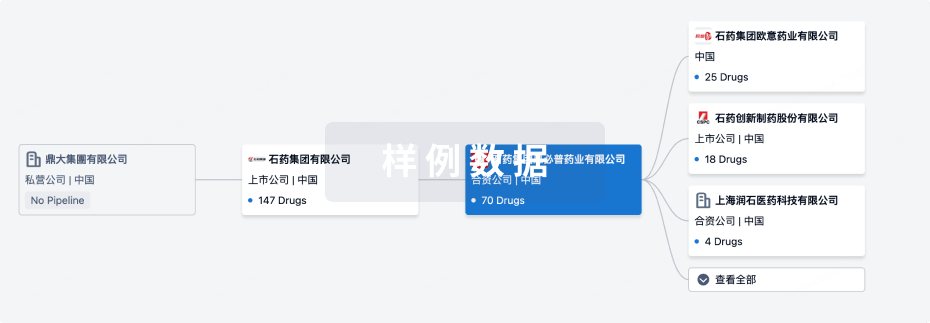
管线布局
2025年12月26日管线快照
管线布局中药物为当前组织机构及其子机构作为药物机构进行统计,早期临床1期并入临床1期,临床1/2期并入临床2期,临床2/3期并入临床3期
药物发现
17
36
临床前
临床1期
2
1
临床2期
申请上市
1
11
其他
登录后查看更多信息
当前项目
| 药物(靶点) | 适应症 | 全球最高研发状态 |
|---|---|---|
重组人钙调蛋白磷酸酶B(Haikou Qili Pharmaceutical) ( CaM ) | 晚期胃癌 更多 | 临床1/2期 |
锝[99mTc]异腈葡萄糖 | 肿瘤 更多 | 临床1期 |
锝[99mTc]异腈氨基葡萄糖 | 非小细胞肺癌 更多 | 临床1期 |
DA-5 | 血管疾病 更多 | 临床前 |
[99mTc]Tc-CNMCHDG | 肿瘤 更多 | 临床前 |
登录后查看更多信息
药物交易
使用我们的药物交易数据加速您的研究。
登录
或
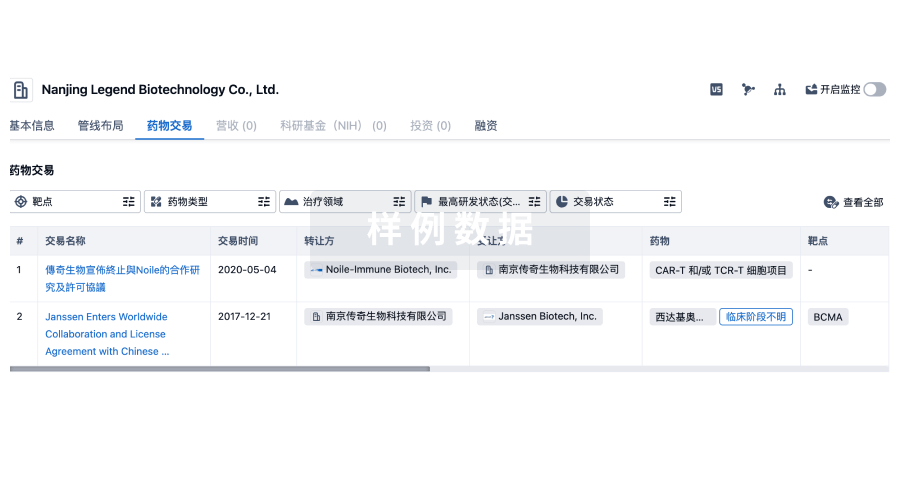
转化医学
使用我们的转化医学数据加速您的研究。
登录
或
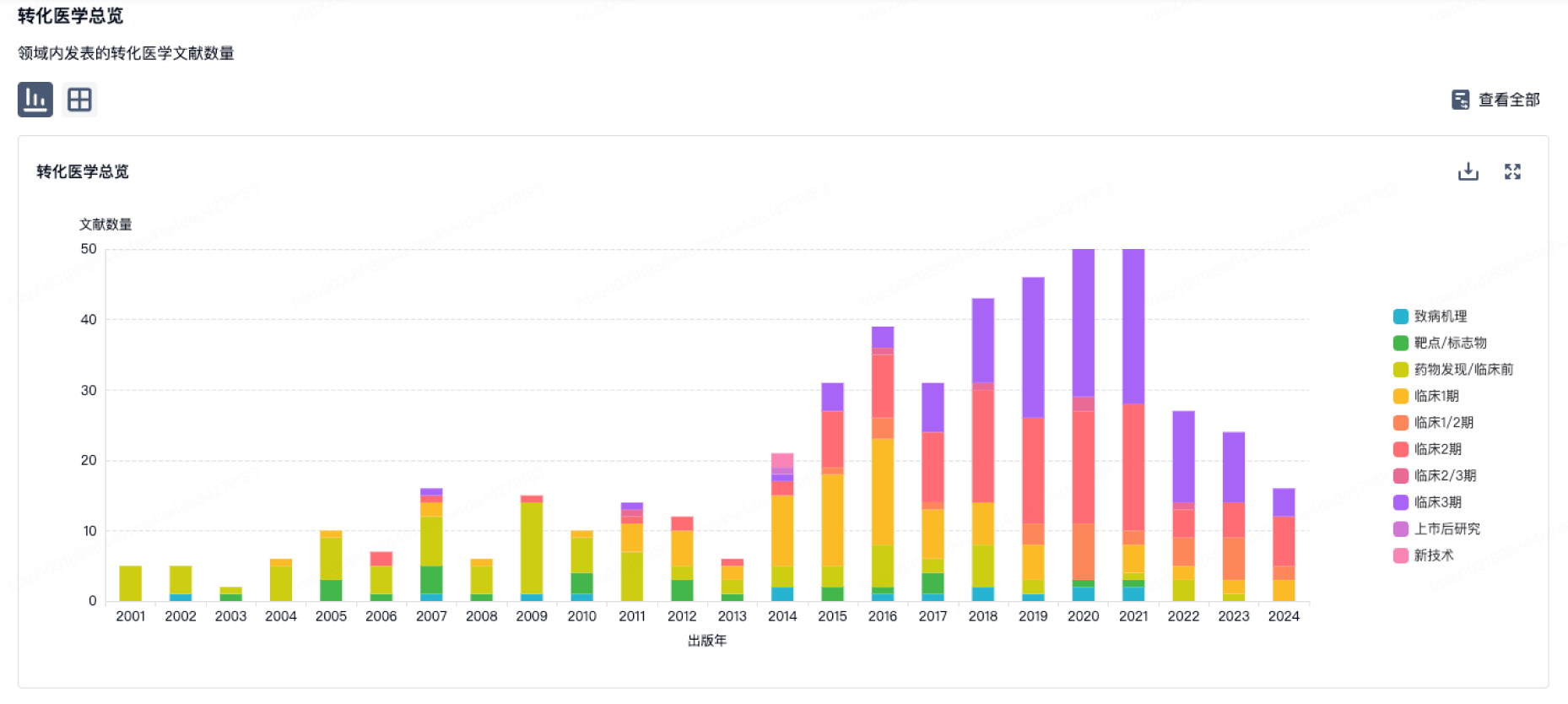
营收
使用 Synapse 探索超过 36 万个组织的财务状况。
登录
或
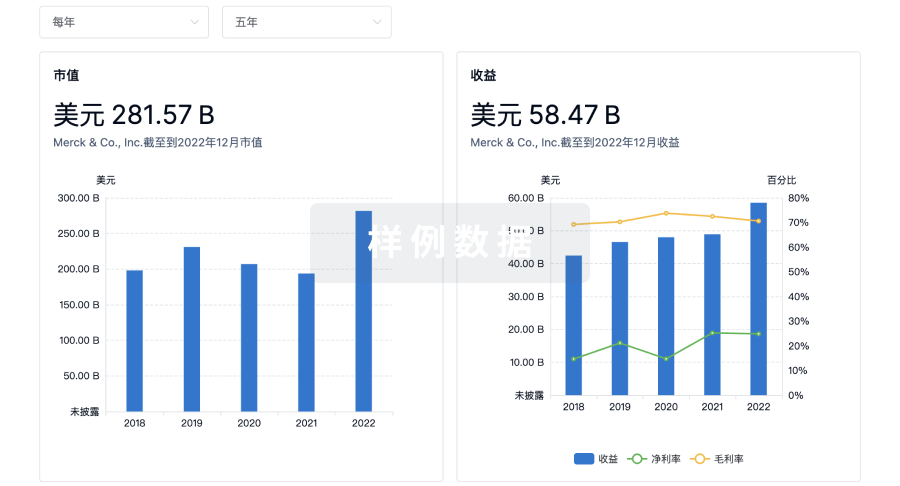
科研基金(NIH)
访问超过 200 万项资助和基金信息,以提升您的研究之旅。
登录
或

投资
深入了解从初创企业到成熟企业的最新公司投资动态。
登录
或
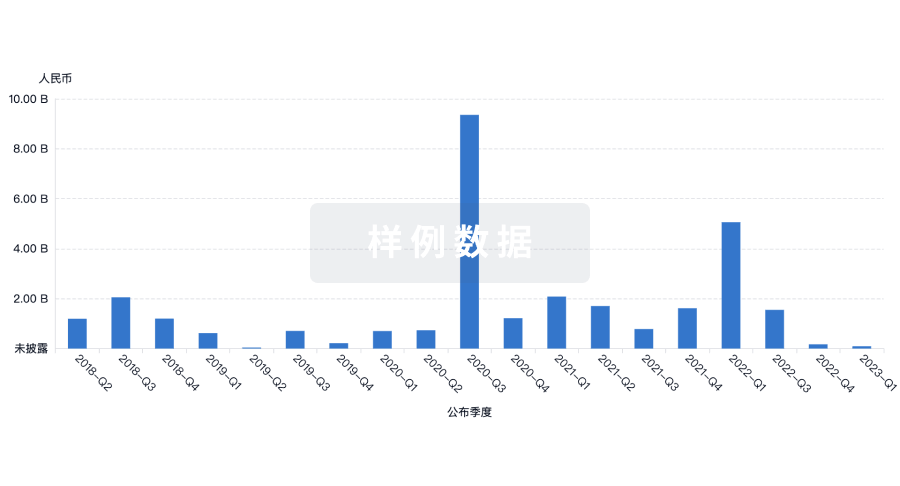
融资
发掘融资趋势以验证和推进您的投资机会。
登录
或

生物医药百科问答
全新生物医药AI Agent 覆盖科研全链路,让突破性发现快人一步
立即开始免费试用!
智慧芽新药情报库是智慧芽专为生命科学人士构建的基于AI的创新药情报平台,助您全方位提升您的研发与决策效率。
立即开始数据试用!
智慧芽新药库数据也通过智慧芽数据服务平台,以API或者数据包形式对外开放,助您更加充分利用智慧芽新药情报信息。
生物序列数据库
生物药研发创新
免费使用
化学结构数据库
小分子化药研发创新
免费使用
